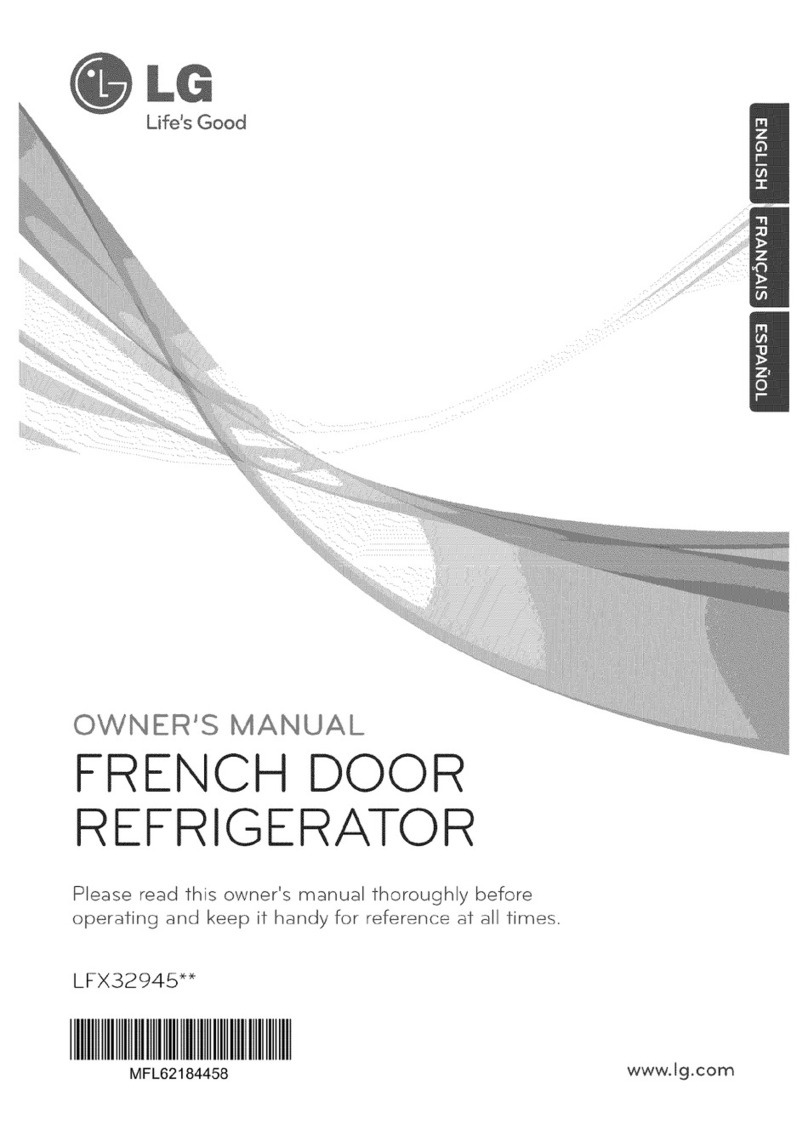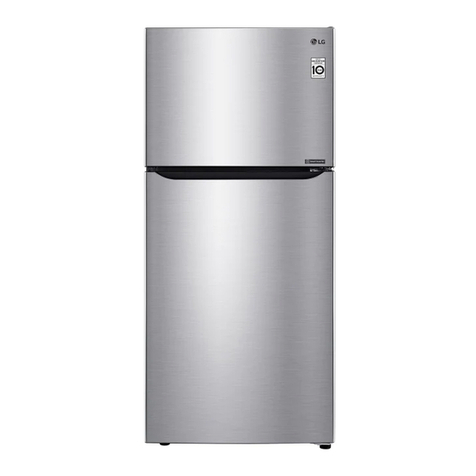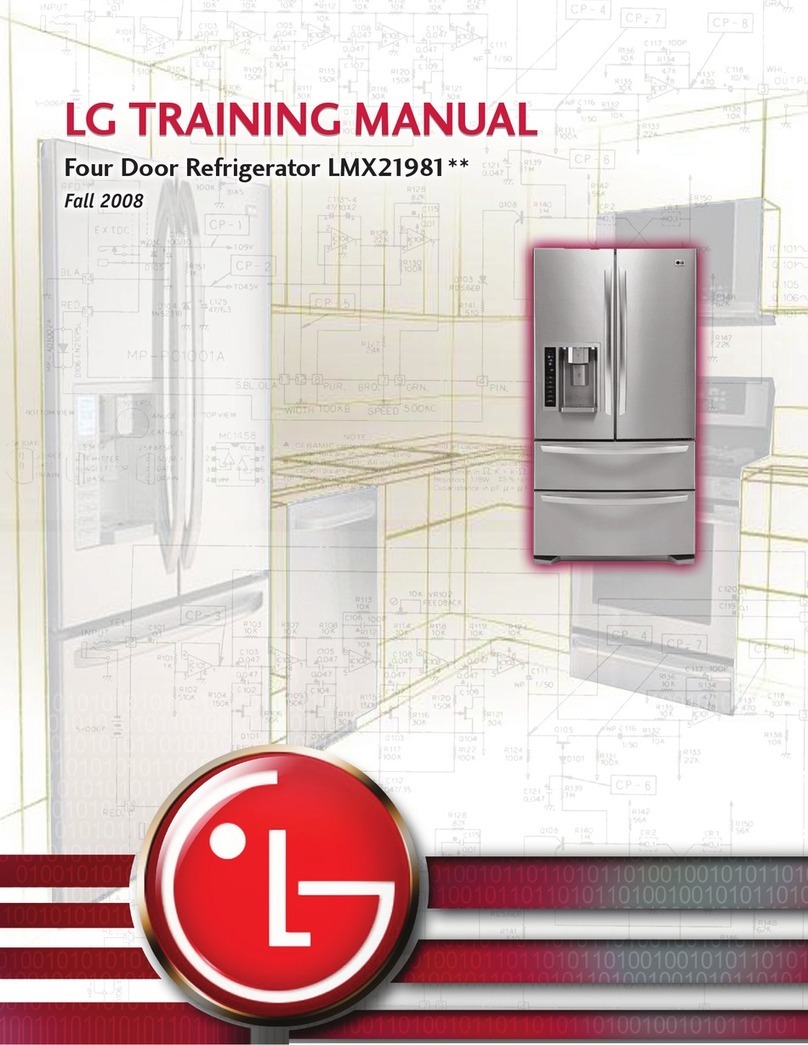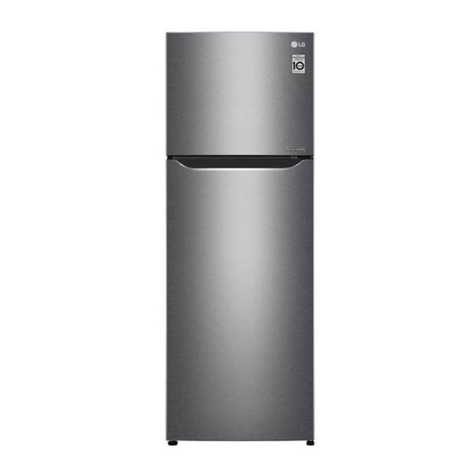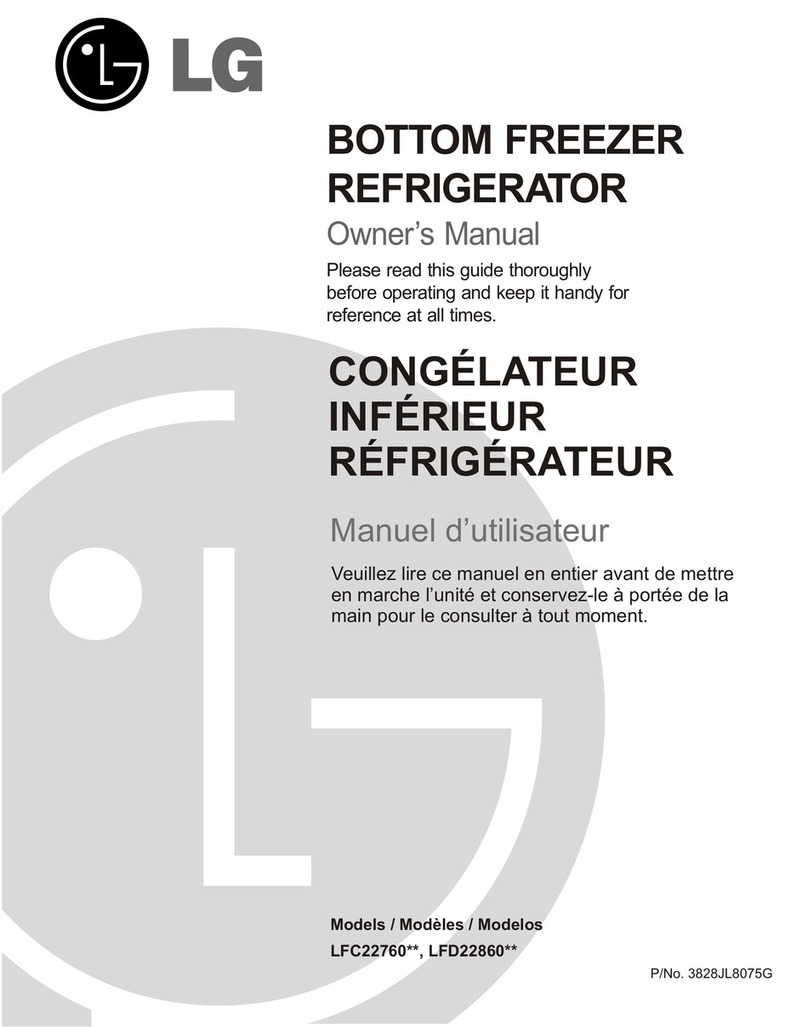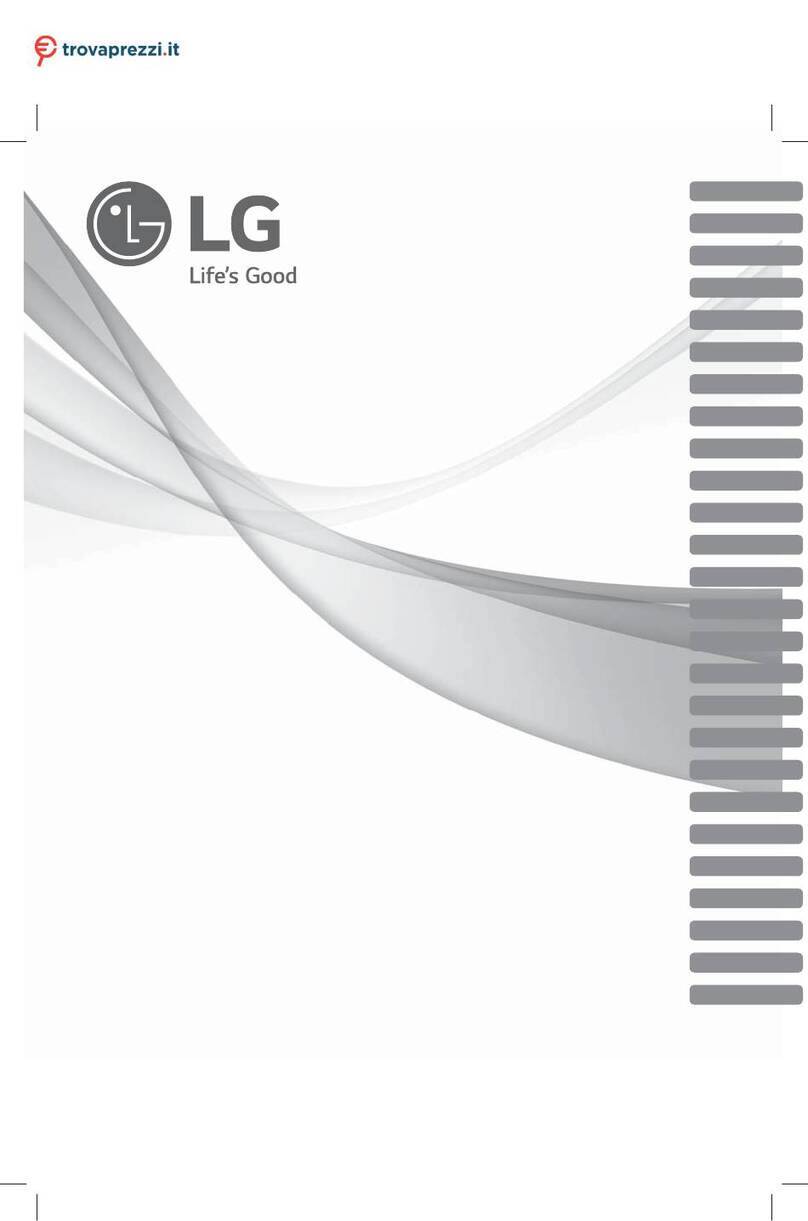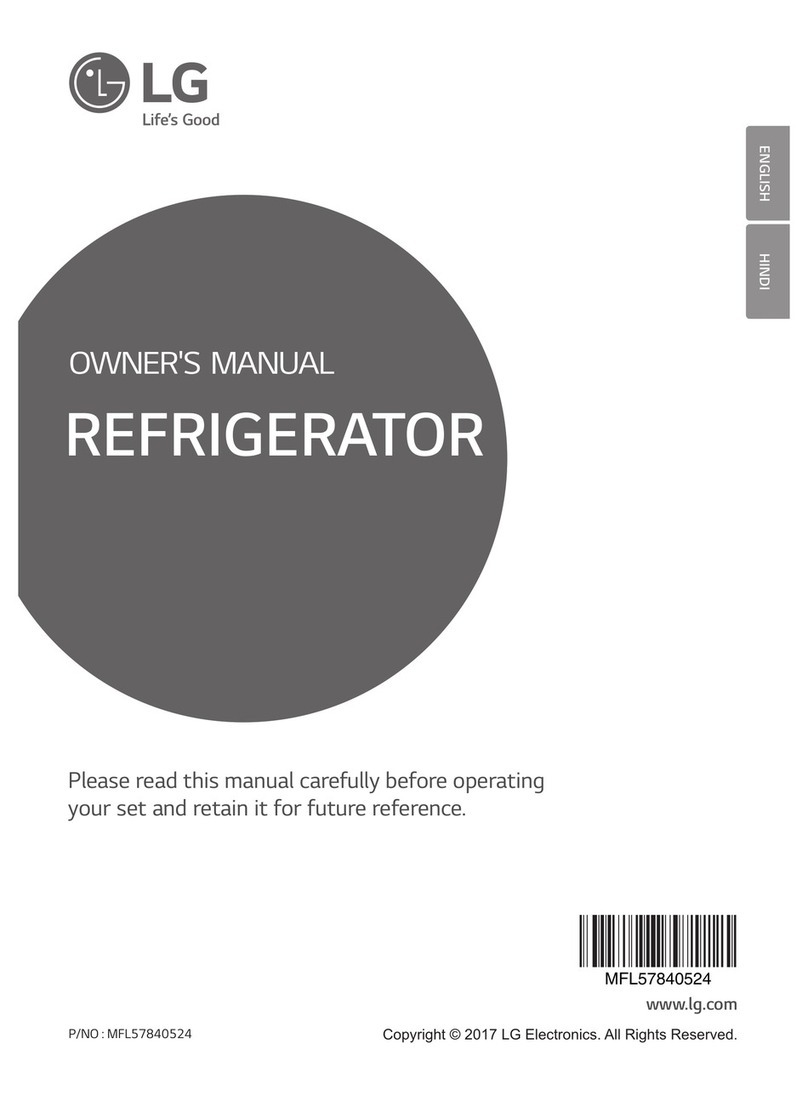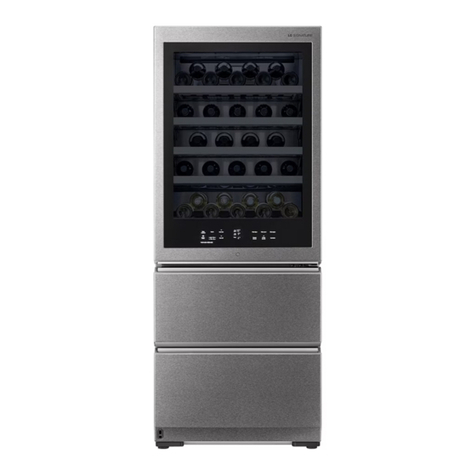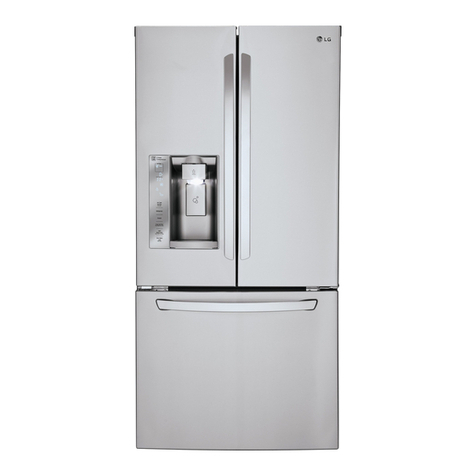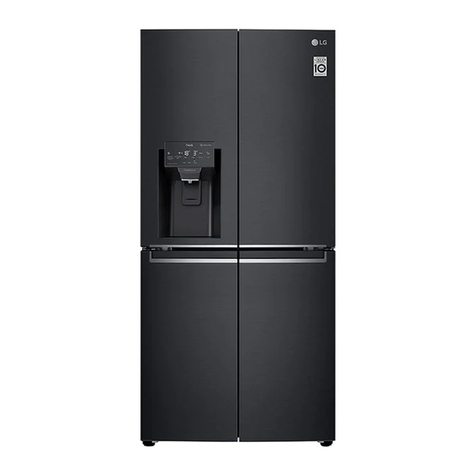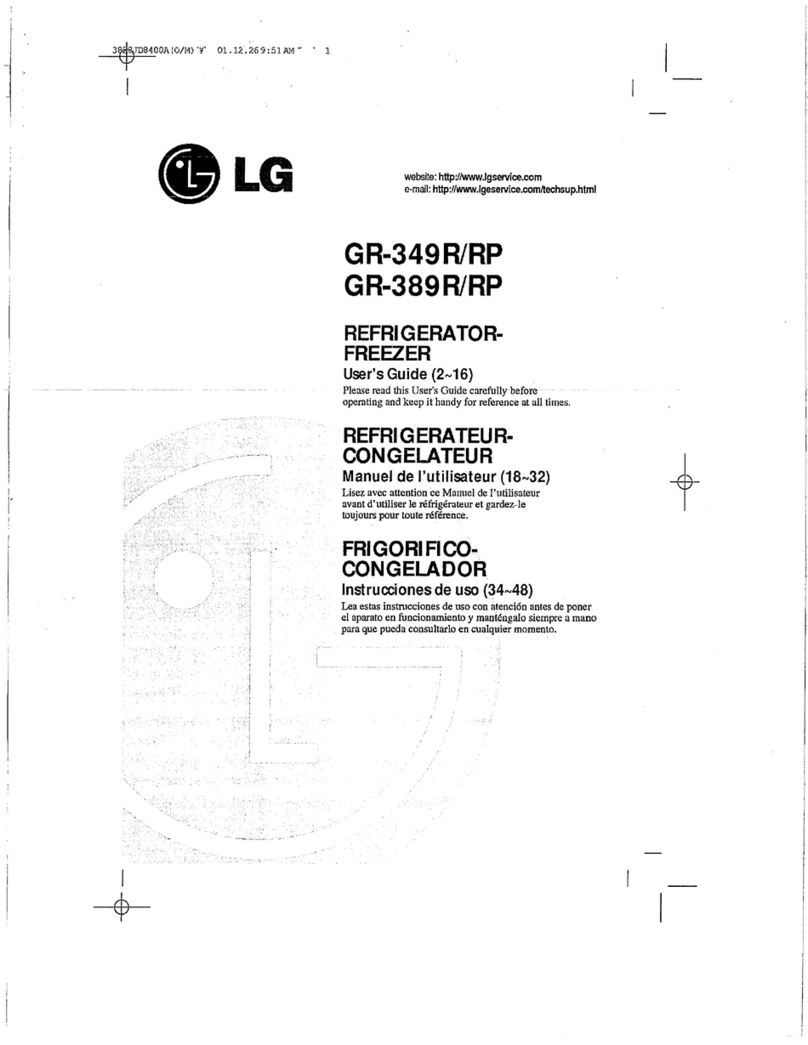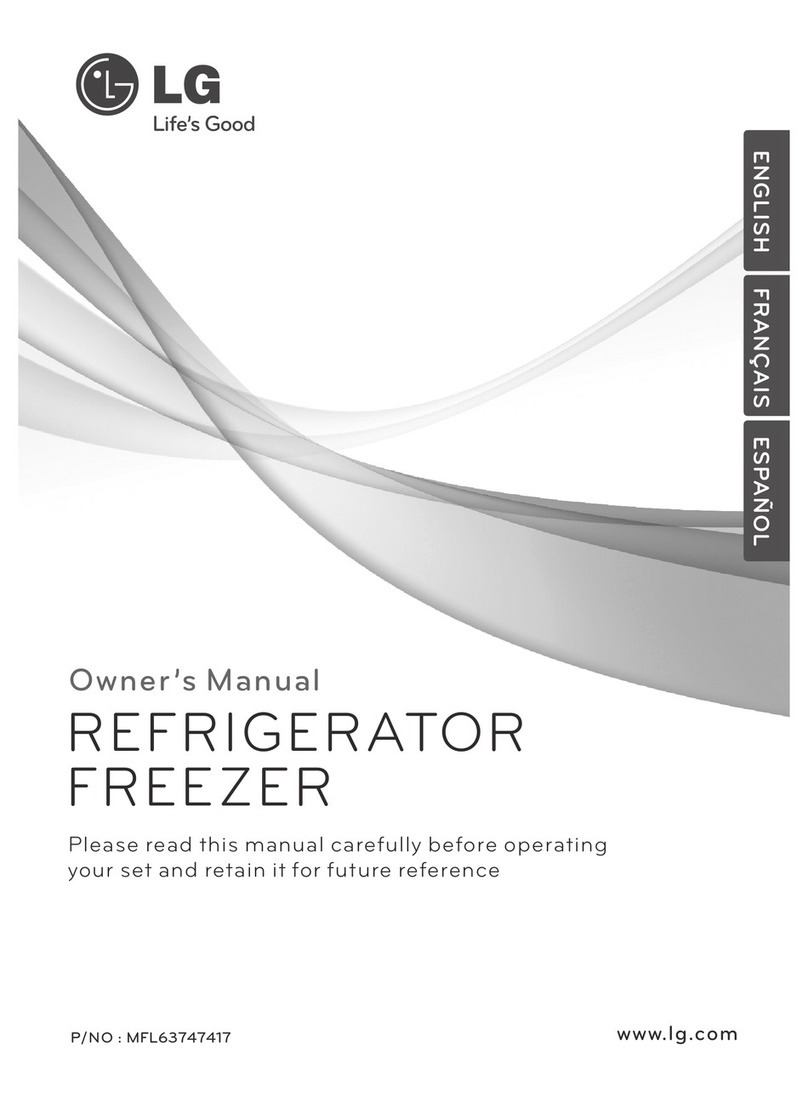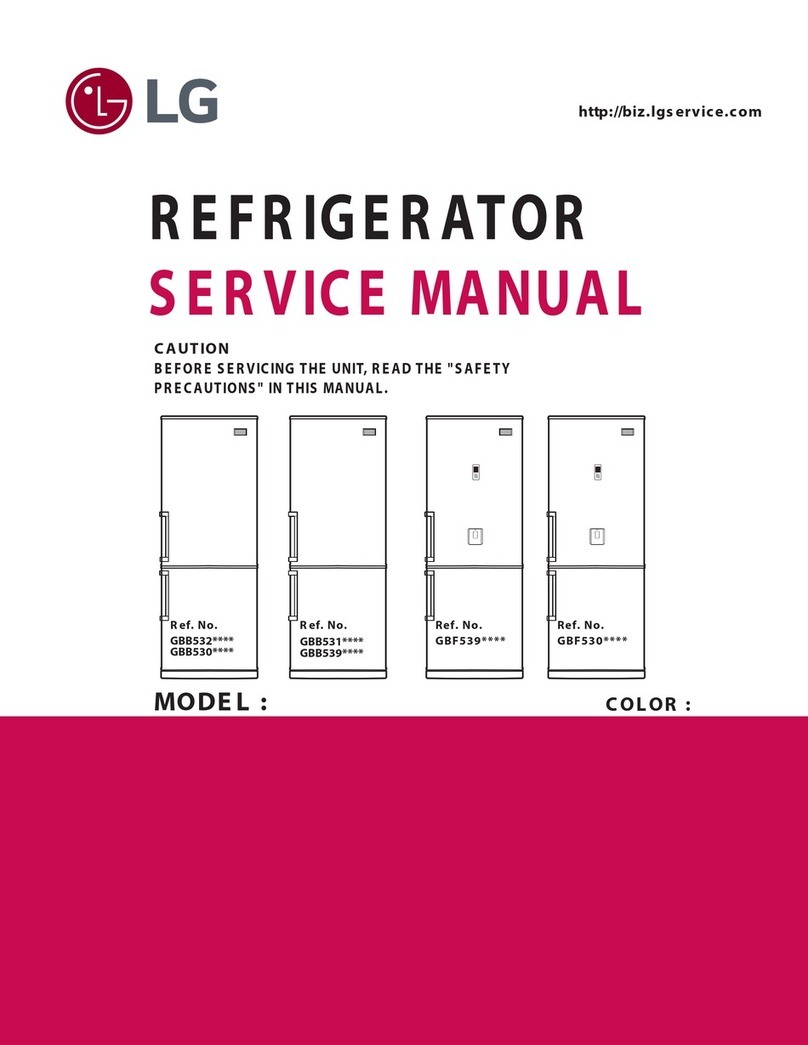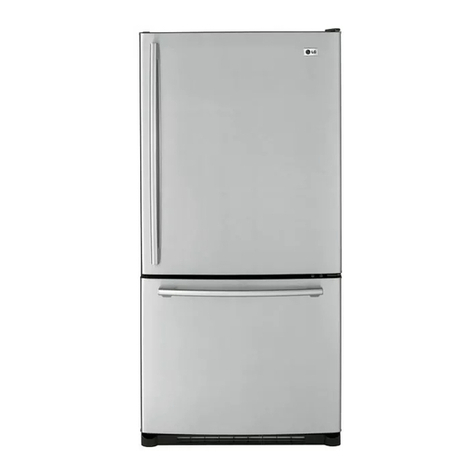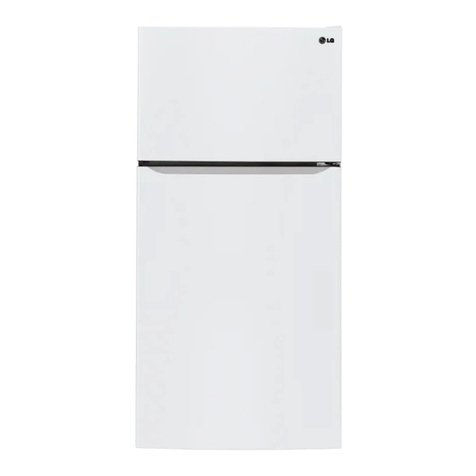This product is not to be used for special purposes such as the storage of medicine or test materials
y
or for use on ships, etc.
Unplug the power plug before cleaning or repairing the fridge.
y
When you replace the light bulb in the fridge, unplug the fridge or turn off the power.
y
Do not modify or extend the power cord.
y
Do not use a dryer to dry the interior. Do not light a candle to remove interior odors.
y
For your safety, this appliance must be properly grounded. Have the wall outlet and the circuit
y
checked by a qualified electrician to make sure the outlet is properly grounded.
Do not use an outlet that can be turned off with a switch. Do not use an extension cord. It is the
y
user’s responsibility to replace a standard 2-prong wall outlet with a standard 3-prong wall outlet.
Do not, under any circumstances, cut or remove the third (ground) prong from the power cord.
y
Do not use an adapter plug and plug the power plug into a multi-outlet extension cord.
y
Disconnect the power cord immediately if you hear a noise, smell a strange odor or detect smoke
y
coming from the appliance.
Turn the power off if water or dust penetrates into the fridge. Call a service agent.
y
Do not disassemble or modify the fridge.
y
Do not put hands, feet, or metal objects below or behind the fridge.
y
Do not operate the fridge or touch the power cord with wet hands.
y
In fridges with automatic icemakers, avoid contact with the moving parts of the ejector mechanism or
y
with the heating element that releases the cubes. Do not place fingers or hands on the automatic ice-
making mechanism while the fridge is plugged in.
When dispensing ice from the dispenser, do not use crystal ceramics.
y
Do not touch the cold surfaces in the freezer compartment with wet or damp hands, when your
y
fridge is in operation.
Do not put glass containers, glass bottles or soda in the freezer.
y
This appliance is not intended for use by persons (including children) with reduced physical, sensory
y
or mental capabilities, or lack of experience and knowledge, unless they have been given supervision
or instruction concerning the use of the appliance by a person responsible for their safety.
Do not refreeze frozen food that has thawed completely. Doing so may result in a serious health
y
issue.
If you are throwing away your old fridge, make sure the CFC coolant is removed for proper disposal
y
by a qualified servicer. If you release CFC coolant, you may be fined or imprisoned in accordance with
the relevant environmental law.
Junked or abandoned fridges are dangerous, even if they are sitting for only a few days. When
y
disposing of the fridge, remove the packing materials from the door or take off the doors but leave
the shelves in place so that children may not easily climb inside.
If connected to a circuit protected by fuses, use time delay fuse.
y
READ ALL INSTRUCTIONS BEFORE USING THE APPLIANCE.
To reduce the risk of fire, electric shock, or personal injury when using your product, basic safety
precautions should be followed, including the following:
